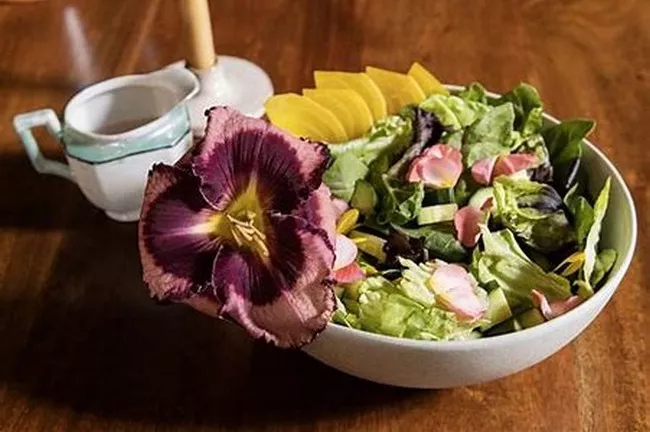Edible flowers can transform any dish into a culinary delight, adding color, flavor, and a touch of sophistication. They offer a variety of tastes, from sweet to spicy, and come in a wide range of colors. This article will explore some of the best edible flowers, their uses, and how to incorporate them into your cooking.
1. Nasturtiums
Nasturtiums are vibrant flowers that come in shades of orange, red, and yellow. Both the flowers and leaves are edible. They have a peppery flavor similar to arugula. Nasturtiums can be used in salads, as garnishes, or even pickled. They are rich in vitamin C and have antimicrobial properties.
2. Pansies
Pansies are known for their beautiful, colorful petals. They come in various colors, including purple, yellow, and blue. Pansies have a mild, sweet flavor. They are often used as decorative elements in salads, desserts, and drinks. Pansies are also rich in vitamins A and C.
3. Calendula
Calendula, also known as marigold, has bright yellow and orange petals. The flavor is slightly spicy and tangy. Calendula petals can be used in salads, soups, and stews. They are known for their anti-inflammatory and antioxidant properties. Calendula can also be used to make herbal teas.
4. Chamomile
Chamomile flowers are small and daisy-like with white petals and a yellow center. They have a mild, apple-like flavor. Chamomile is best known for its calming properties and is commonly used in teas. It can also be added to salads and desserts.
5. Violets
Violets come in various colors, including purple, blue, and white. They have a sweet, floral flavor. Violets can be used in salads, as a garnish, or in desserts. They are also used to make violet syrup and candies. Violets are rich in antioxidants and vitamins A and C.
6. Dandelions
Dandelions are bright yellow flowers that can be used from root to flower. The petals have a slightly sweet, honey-like flavor. Dandelion flowers are often used in salads, teas, and jellies. They are known for their diuretic and detoxifying properties. The leaves can also be used as a bitter green in salads.
7. Roses
Roses come in many colors, and their petals have a delicate, sweet flavor. They are often used in desserts, salads, and as a garnish. Rose petals can also be used to make rose water and jams. Roses have been used traditionally for their anti-inflammatory and soothing properties.
8. Lavender
Lavender flowers are small and purple, with a strong, floral flavor. They are commonly used in baking, syrups, and teas. Lavender can also be used to infuse honey or make herbal remedies. It has calming properties and is known for its aromatic benefits.
9. Hibiscus
Hibiscus flowers are large and come in shades of red, pink, and orange. They have a tart, cranberry-like flavor. Hibiscus can be used in teas, salads, and jams. It is known for its antioxidant properties and is often used to lower blood pressure and improve cardiovascular health.
10. Squash Blossoms
Squash blossoms are edible flowers from squash plants. They have a mild, slightly sweet flavor. Squash blossoms are often stuffed with cheese and herbs, then fried or baked. They can also be added to soups and salads. These blossoms are a good source of vitamins A and C.
See Also: How to Attach Dried Flowers to Glass: A Detailed Guide
Tips for Using Edible Flowers
Freshness is Key
Always use fresh flowers in your dishes. Wilted or old flowers may not have the same flavor and can be less appealing.
Know Your Source
Ensure that the flowers you use are grown organically and are free from pesticides. You can grow your own edible flowers or purchase them from a trusted source.
Use Sparingly
Edible flowers should be used in moderation. A little goes a long way in enhancing the flavor and appearance of your dishes.
Experiment with Flavors
Different flowers offer different flavors, so don’t be afraid to experiment. You might find a new favorite that adds a unique touch to your meals.
Be Mindful of Allergies
Some people may have allergies to certain flowers. Introduce new edible flowers into your diet gradually and watch for any adverse reactions.
Conclusion
Edible flowers are a wonderful addition to your culinary repertoire. They offer a range of flavors, from sweet to spicy, and can brighten up any dish. By choosing fresh, organically grown flowers and using them thoughtfully, you can enhance your meals and enjoy the beauty and taste of these natural delights. Whether you use them in salads, desserts, or as garnishes, edible flowers are sure to add a touch of elegance to your cooking.


